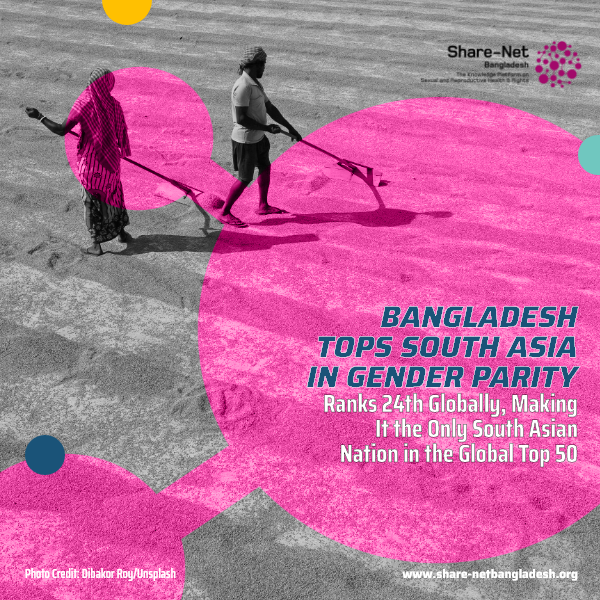Bangladesh Tops South Asia in Gender Parity: Ranks 24th Globally, Making It the Only South Asian Nation in the Global Top 50
In a region still grappling with deep-rooted gender disparities, Bangladesh has once again stood out. According to the World Economic Forum’s Global Gender Gap Index 2025, Bangladesh ranks 24th globally, making it the only South Asian nation in the global top 50 — a position it has held consistently over the past decade.
The country achieved a gender parity score of 77.5%, reflecting remarkable progress in political empowerment and education for women. In contrast, other South Asian economies like India (131st), Sri Lanka (130th), and Pakistan (148th) remain far behind.
“Among the seven economies in South Asia, Bangladesh remains the only country to secure a place in the global top 50,” the report states, underlining the nation’s leadership in gender reforms.
Breaking the Barriers: Political and Educational Empowerment
One of the key highlights of the report is Bangladesh’s exceptional progress in political leadership. It remains the only South Asian country to have achieved political parity at the head-of-state level, a feat not just symbolic but reflective of decades of female-led governance. This empowerment at the top has gradually translated into increased visibility and participation of women in grassroots politics and civil society.
In education, Bangladesh continues to close the gender gap, with female literacy and school enrollment rates steadily improving, especially in secondary and higher education. According to UNESCO, female enrollment in tertiary education in Bangladesh has surpassed that of males in recent years — a critical marker for long-term gender balance in employment and leadership.
SRHR Connection: Why Gender Parity Matters
This leadership in gender parity significantly contributes to Sexual and Reproductive Health and Rights (SRHR). A gender-balanced policy environment improves access to quality reproductive health services, reduces maternal mortality, and ensures youth-friendly SRHR education. Bangladesh’s expanded access to contraceptive services, community clinics, and adolescent health corners show that investment in women’s rights leads to public health gains.
Despite challenges, the country has implemented policies focused on ending child marriage, promoting reproductive autonomy, and supporting girls’ education — all critical components of SRHR.
A Mixed Picture for South Asia
Regionally, South Asia ranks 7th out of 8 global regions, with an average gender parity score of 64.6%. While some improvements have been seen in the representation of women in senior and technical roles, the income gap widened by 7.8 percentage points. Countries like Nepal and Pakistan continue to struggle with literacy gaps and poor political representation.
“The best performers in lower-income categories – such as Bangladesh – have outpaced many wealthier nations in terms of tangible gains,” notes the WEF, showing that political will matters more than economic strength.
What Lies Ahead
Still, Bangladesh’s success is not a finish line. While the WEF report celebrates progress, SRHR experts warn of rising conservative pushbacks, urban-rural disparities, and limited funding for youth-led gender initiatives. Bridging these gaps will require deeper investments in SRHR programs, particularly for marginalised groups.
Yet, the takeaway is clear: when a country puts women at the center of policymaking, the entire society benefits.
Source: Dhaka Tribune
Photo Credit: Dibakor Roy/Unsplash

